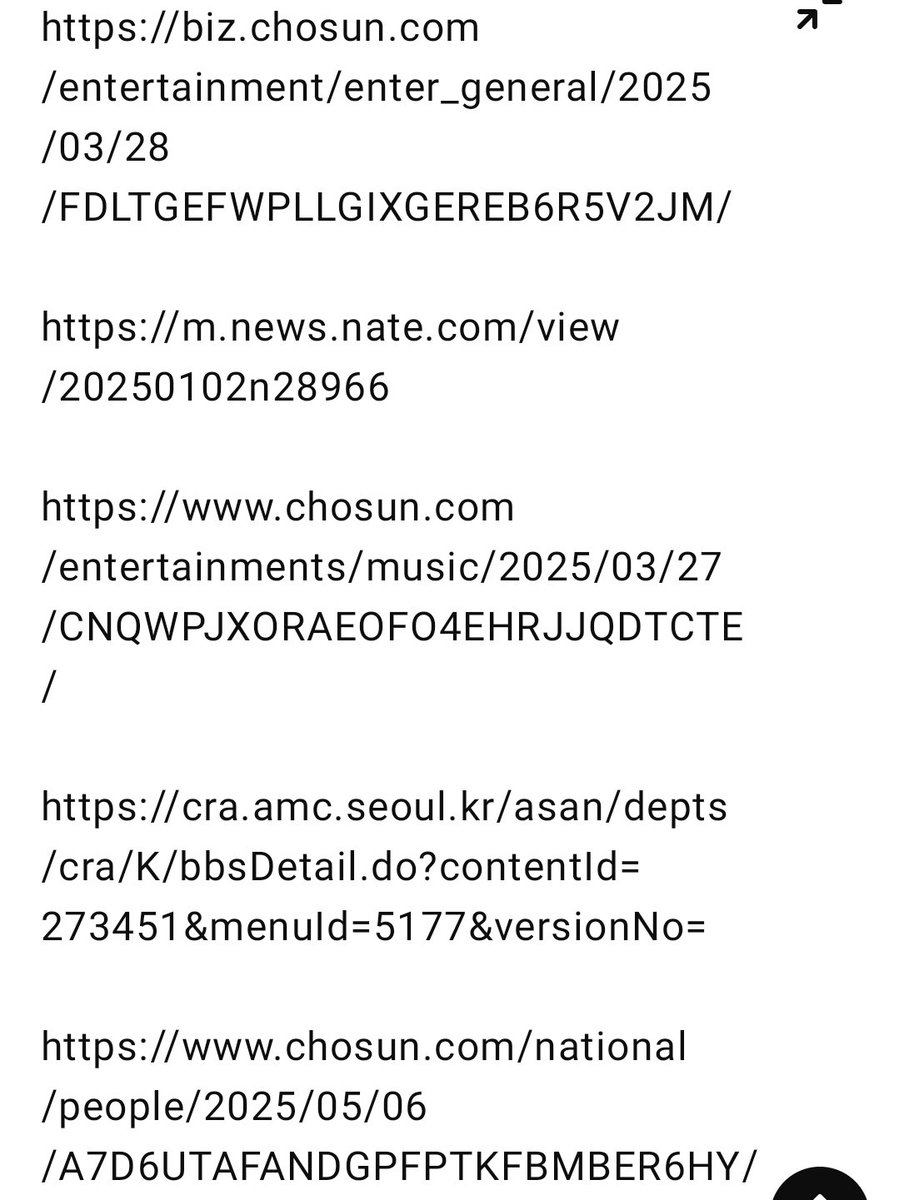NewJeans’ 21 false claims and rebuttals
1. Source Music gave NewJeans a dorm full of bugs?
Fact: That dorm was provided back when Source Music was still a small agency, before HYBE acquired it. HYBE has nothing to do with it. Bugs can appear anywhere and are a matter of upkeep, not deliberate neglect.
2. HYBE debuted LE SSERAFIM first to undermine NewJeans?
Fact: Producer Min Hee-jin delayed cooperation by insisting on running her own label and submitting debut materials late, which pushed NewJeans’ debut back. No official meeting records show HYBE intentionally holding them back.
3. HYBE blocked NewJeans by giving LE SSERAFIM the Louis Vuitton ambassadorship?
Fact: Sakura signed with Louis Vuitton in April 2022—before NewJeans debuted—so the full-ambassador deal had already been set in motion. NewJeans signed later in the normal timeline.
4. In ILLIT’s “food World Cup” clip, Wonhee mocked Minji with kalguksu (knife-cut noodles)?
Fact: The game was an Mnet “ideal-type World Cup” segment. The noodle choice was random, filmed long before the later controversy. Wonhee often mentions her hometown kalguksu shop.
5. ILLIT purposely appeared on “Knowing Bros” the same day as NewJeans’ comeback?
Fact: Broadcast schedules are fixed far in advance by the network and local governments. Even the staff didn’t know NewJeans’ comeback date. Agencies don’t get to line up outside schedules at will.
6. ILLIT copied NewJeans by doing a hanbok photo shoot?
Fact: The shoot was organized by an external magazine. Group hanbok photos are a concept countless idol groups have done over the years.
7. ILLIT ripped off NewJeans with a 3-D billboard ad?
Fact: That site is specifically built for 3-D ads and has been used by many brands and artists long before NewJeans.
8. ILLIT plagiarized NewJeans’ songs and choreography?
Fact: A court has already ruled there was no plagiarism. Meanwhile, questions persist about the similarity between NewJeans’ team name/logo and the Mexican group “Jeans.”
9. ILLIT’s X (Twitter) account followed a NewJeans anti-fan account on purpose?
Fact: For about 20 minutes the staff accidentally followed three fan accounts, one of which actually supported NewJeans. There was no organized anti-campaign.
10. Wonhee is faking sympathy with hate-comment reports and a leg injury?
Fact: She lawfully reported malicious comments. Her use of crutches was confirmed by a specialist as standard treatment—not acting.
11. An ILLIT manager told Hanni to “ignore her”?
Fact: CCTV and interviews found no such remark, and Hanni altered her statement multiple times. No physical evidence supports the claim.
12. ILLIT members mocked NewJeans verbally and through gestures?
Fact: Released CCTV only shows them giving a right-angle bow. No mocking footage exists. Claims surfaced after the storage period ended and frames were allegedly edited.
13. HYBE leaked NewJeans’ medical records?
Fact: Only an internal schedule-adjustment note was shown, not formal medical records, and it was not written by medical staff.
14. HYBE stopped NewJeans from wearing memorial ribbons?
Fact: All HYBE artists were reviewing the same ribbon-wearing options. NewJeans insisted on ribbons they had prepared themselves.
1. Source Music gave NewJeans a dorm full of bugs?
Fact: That dorm was provided back when Source Music was still a small agency, before HYBE acquired it. HYBE has nothing to do with it. Bugs can appear anywhere and are a matter of upkeep, not deliberate neglect.
2. HYBE debuted LE SSERAFIM first to undermine NewJeans?
Fact: Producer Min Hee-jin delayed cooperation by insisting on running her own label and submitting debut materials late, which pushed NewJeans’ debut back. No official meeting records show HYBE intentionally holding them back.
3. HYBE blocked NewJeans by giving LE SSERAFIM the Louis Vuitton ambassadorship?
Fact: Sakura signed with Louis Vuitton in April 2022—before NewJeans debuted—so the full-ambassador deal had already been set in motion. NewJeans signed later in the normal timeline.
4. In ILLIT’s “food World Cup” clip, Wonhee mocked Minji with kalguksu (knife-cut noodles)?
Fact: The game was an Mnet “ideal-type World Cup” segment. The noodle choice was random, filmed long before the later controversy. Wonhee often mentions her hometown kalguksu shop.
5. ILLIT purposely appeared on “Knowing Bros” the same day as NewJeans’ comeback?
Fact: Broadcast schedules are fixed far in advance by the network and local governments. Even the staff didn’t know NewJeans’ comeback date. Agencies don’t get to line up outside schedules at will.
6. ILLIT copied NewJeans by doing a hanbok photo shoot?
Fact: The shoot was organized by an external magazine. Group hanbok photos are a concept countless idol groups have done over the years.
7. ILLIT ripped off NewJeans with a 3-D billboard ad?
Fact: That site is specifically built for 3-D ads and has been used by many brands and artists long before NewJeans.
8. ILLIT plagiarized NewJeans’ songs and choreography?
Fact: A court has already ruled there was no plagiarism. Meanwhile, questions persist about the similarity between NewJeans’ team name/logo and the Mexican group “Jeans.”
9. ILLIT’s X (Twitter) account followed a NewJeans anti-fan account on purpose?
Fact: For about 20 minutes the staff accidentally followed three fan accounts, one of which actually supported NewJeans. There was no organized anti-campaign.
10. Wonhee is faking sympathy with hate-comment reports and a leg injury?
Fact: She lawfully reported malicious comments. Her use of crutches was confirmed by a specialist as standard treatment—not acting.
11. An ILLIT manager told Hanni to “ignore her”?
Fact: CCTV and interviews found no such remark, and Hanni altered her statement multiple times. No physical evidence supports the claim.
12. ILLIT members mocked NewJeans verbally and through gestures?
Fact: Released CCTV only shows them giving a right-angle bow. No mocking footage exists. Claims surfaced after the storage period ended and frames were allegedly edited.
13. HYBE leaked NewJeans’ medical records?
Fact: Only an internal schedule-adjustment note was shown, not formal medical records, and it was not written by medical staff.
14. HYBE stopped NewJeans from wearing memorial ribbons?
Fact: All HYBE artists were reviewing the same ribbon-wearing options. NewJeans insisted on ribbons they had prepared themselves.
15. HYBE published NewJeans trainee-era videos?
Fact: Dispatch released the footage. HYBE immediately requested deletion and blur edits to protect likeness rights.
16. ADOR blocked reporters at a Louis Vuitton event so only one covered NewJeans?
Fact: The takedown request came from Apple, the advertiser, not ADOR. Reporters simply flocked to bigger names like Jennie that day.
17. HYBE planned to “shelve” NewJeans for 18 months?
Fact: The memo discussed long-range production with Grammy-level producers, explaining possibilities—not locking them away.
18. BELIFT LAB stole NewJeans’ planning documents?
Fact: “Text in a circle and a line” is a basic presentation layout. The cited comparison images were zoomed, cropped, and altered.
19. HYBE downplayed NewJeans’ album sales?
Fact: PR clarified that the touted “one million” figure was worldwide, not Japan alone—standard IR housekeeping.
20. ADOR asked Dolphin Films to delete a NewJeans MV clip?
Fact: The deletion request came from Apple, the brand owner, not ADOR. The footage wasn’t an official MV but an unauthorized upload.
21. A female employee who was sexually harassed spun anti-Min Hee-jin sentiment?
Fact: A Ministry of Labor probe confirmed Min Hee-jin’s abusive language and sexual harassment; she was fined. The actual victim was that employee.
Fact: Dispatch released the footage. HYBE immediately requested deletion and blur edits to protect likeness rights.
16. ADOR blocked reporters at a Louis Vuitton event so only one covered NewJeans?
Fact: The takedown request came from Apple, the advertiser, not ADOR. Reporters simply flocked to bigger names like Jennie that day.
17. HYBE planned to “shelve” NewJeans for 18 months?
Fact: The memo discussed long-range production with Grammy-level producers, explaining possibilities—not locking them away.
18. BELIFT LAB stole NewJeans’ planning documents?
Fact: “Text in a circle and a line” is a basic presentation layout. The cited comparison images were zoomed, cropped, and altered.
19. HYBE downplayed NewJeans’ album sales?
Fact: PR clarified that the touted “one million” figure was worldwide, not Japan alone—standard IR housekeeping.
20. ADOR asked Dolphin Films to delete a NewJeans MV clip?
Fact: The deletion request came from Apple, the brand owner, not ADOR. The footage wasn’t an official MV but an unauthorized upload.
21. A female employee who was sexually harassed spun anti-Min Hee-jin sentiment?
Fact: A Ministry of Labor probe confirmed Min Hee-jin’s abusive language and sexual harassment; she was fined. The actual victim was that employee.
• • •
Missing some Tweet in this thread? You can try to
force a refresh


















